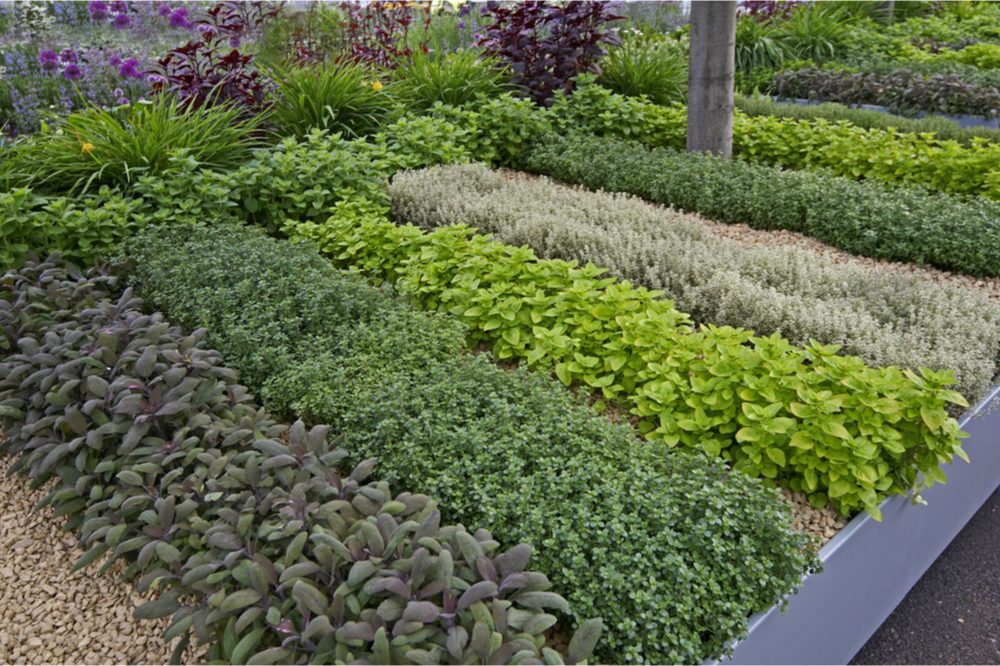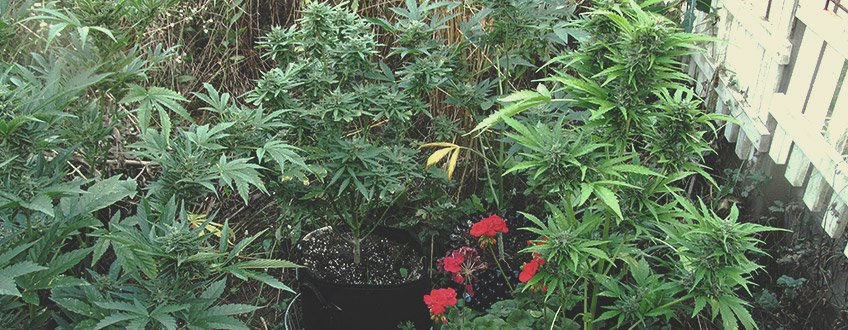Protect and Nourish Your Cannabis Crops with Companion Plants
4/19/2022 1:30 PM

Protect and Nourish Your Cannabis Crops with Companion Plants
The sun has started to peek through the cloudy winter skies and the first green sprouts are making their way out of newly exposed soil. With Spring fast approaching it’s finally time to begin thinking about planting the backyard garden so that it can bloom and thrive into the warmer months. Cannabis plants may be the focal point of your growing plans but companion plants can help protect your precious crop from diseases, mould, and pest infestations.
What is Companion Planting?
This is a natural process where plants that are beneficial to one another are planted close together to improve their growing environment. Not only will this process protect your crop it will also improve the health of your entire garden with the abundance of biodiversity. For this to be effective plants need to be planted close together but be careful to spread them out enough so that they won’t have to compete for nutrients or root space.
The Many Benefits
There are so many reasons why you should create a beautiful, diverse garden whether you’re growing cannabis or not. Individual plants can protect against pests, improve soil conditions, provide structural support, attract pollinators, and protect against fungi, and mould. On top of that harvesting companion plants at the end of the season can be used as ingredients for herbal teas. Do your cannabis crop a favour and create a friendly environment to help it thrive!
The Best Companion Plants For Cannabis Crops
Depending on what you need to help you with the overall health of your crop there is a friendly companion plant that is here to help. Read on to find the right plant for you.
Pest Repellents
- Peppermint: The menthol in this fresh herb not only attracts beneficial insects but also repels nasty aphids, fleas, ants, and mice. This fast-growing herb will provide you with minty leaves throughout the season for tea and other recipes. After flowering make sure to cut them back and watch them return year after year with little to no work. To stop it from growing out of control plant them in their own pots between February-June.
- Garlic: This strongly scented plant also repels aphids but has the added benefit of keeping snails, slugs, beetles, and root maggots away. On top of this, it even acts as a natural insecticide and will make a delicious addition to home-cooked meals.
- Marigold: These stunning flowers will not only spruce up your garden but will also repel flies. They provide this protection by releasing chemicals into the soil which lends its ability to repeal pests to its close by friends. Space the plants within 20-30 cm of each other to give these tall flowers room to grow from February-April
Cannabis Camouflage

- Stinging Nettle: This vicious, green plant is named well for its ability to sting anyone brave enough to touch it, let alone eat it.
- Lavender: The beautiful scent of these iconic purple flowers can help hide the strong door of your crop. They also have the added benefit of fending off nasty pests while attracting pollinators. Don’t let them go to waste at the end of the season though- prune the plants and collect the flower heads to dry and use for teas, lotions, and other soothing remedies. Plant them in garden beds or pots next to your cannabis plants between February and July.
Friendly Additions
- Sunflower: Gorgeous flowers named after their beautiful yellow colouring are an uplifting addition to any yard but they also attract mites and flower bugs that eat the less beneficial spider mites and fungus gnats.
- Yarrow: Pretty flowers that attract predatory bugs like wasps which will help protect your precious green, medicinal crop.
Nutrient Providers
- Clover: This plant provides some much-needed nutrients to your crop by degrading organic matter. It protects the soil around your cannabis plants by degrading organic materials and improving water distribution.
- Alfalfa: This tasty green snack provides essential nitrogen, provide extra nutrition by trimming the leaves and letting them provide nutrients to the soil while they degrade into a healthy mulch. As a legume, it works with bacteria in the soil to provide extra nitrogen and extra hydration to other plants. Scatter the seeds across the surface of the soil between April-May and watch them quickly root and sprout within 10 days. Thin them out as needed to stop them from overtaking everything else and use them in salads or as a garnish to provide yourself with essential vitamins and minerals.
- Borage: Medicinal purple plants that have multiple uses also provide nutrients to any garden by acting as a fertilizer. They have deep, reaching roots that bring up nutrients and minerals. Their exponential growth can take over their space so make sure to trim, don’t clean up after though! These nutritional trimmings can be left to make mulch.

Productivity Increasers
- Oregano: This savoury herb often utilized in Italian dishes also attracts beneficial insects and increases the yield of all nearby plants.
- Chamomile: When this herbal flower decomposes it provides enriching calcium and potassium to feed your cannabis plants. It increases oil production, promotes stem health, and acts as an insect repellant by releasing sulphur.
Having a happy garden with essential companion plants can help you achieve the best yield by promoting plant health. Watch your cannabis crop reach new heights free of mould and pests with this list of plants. Do you use this method to help your crop grow to new heights? Let us know in the comments!






